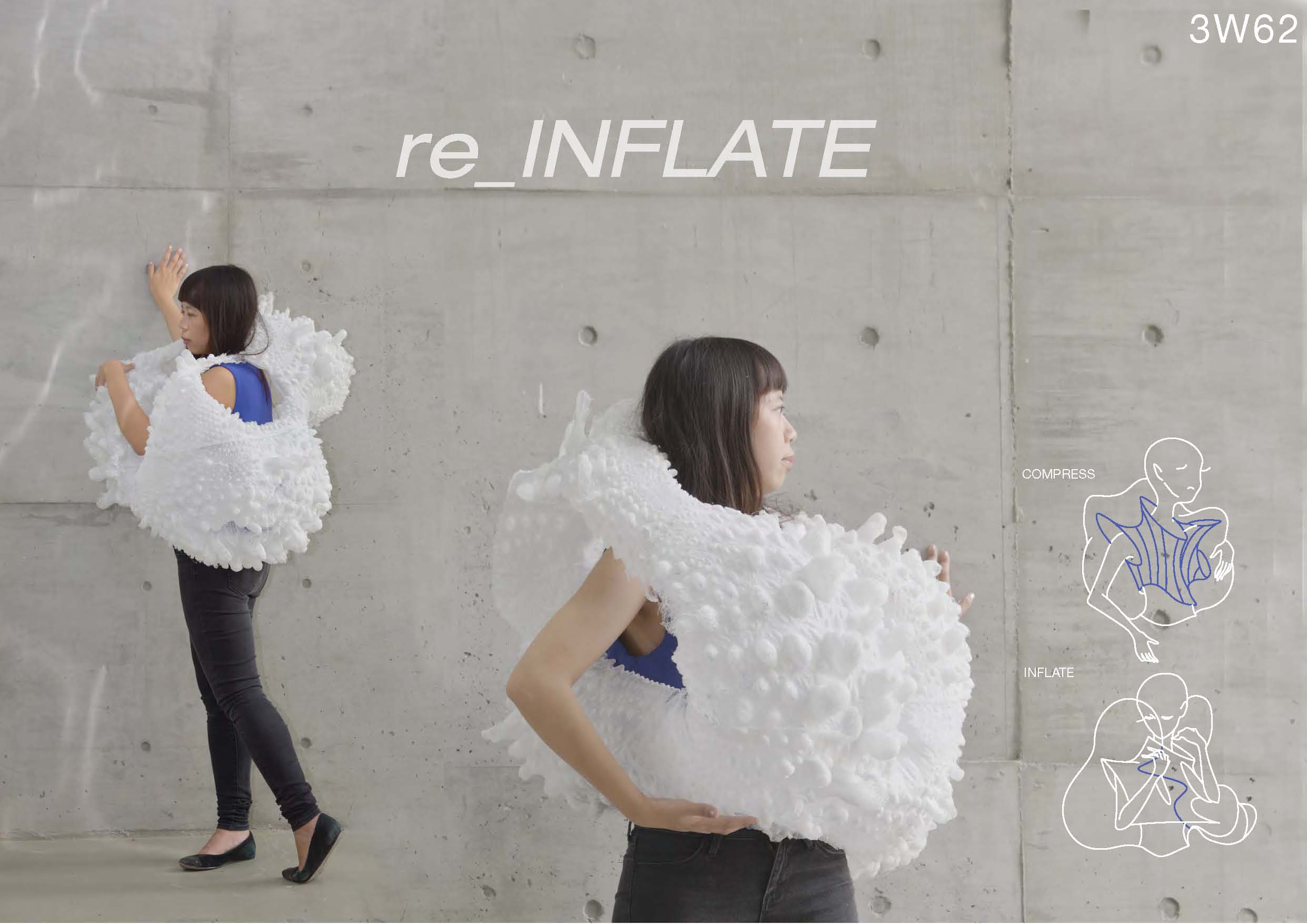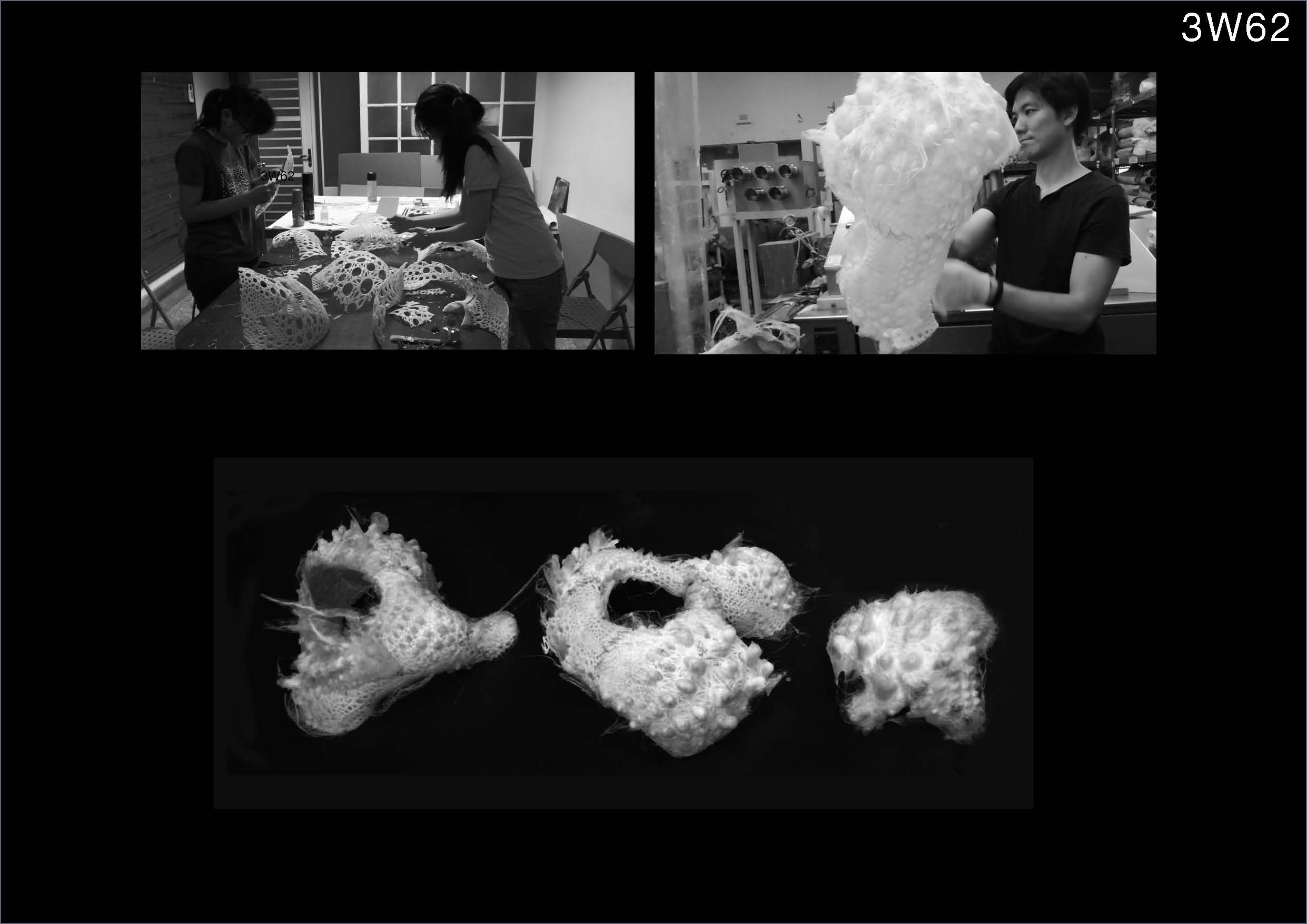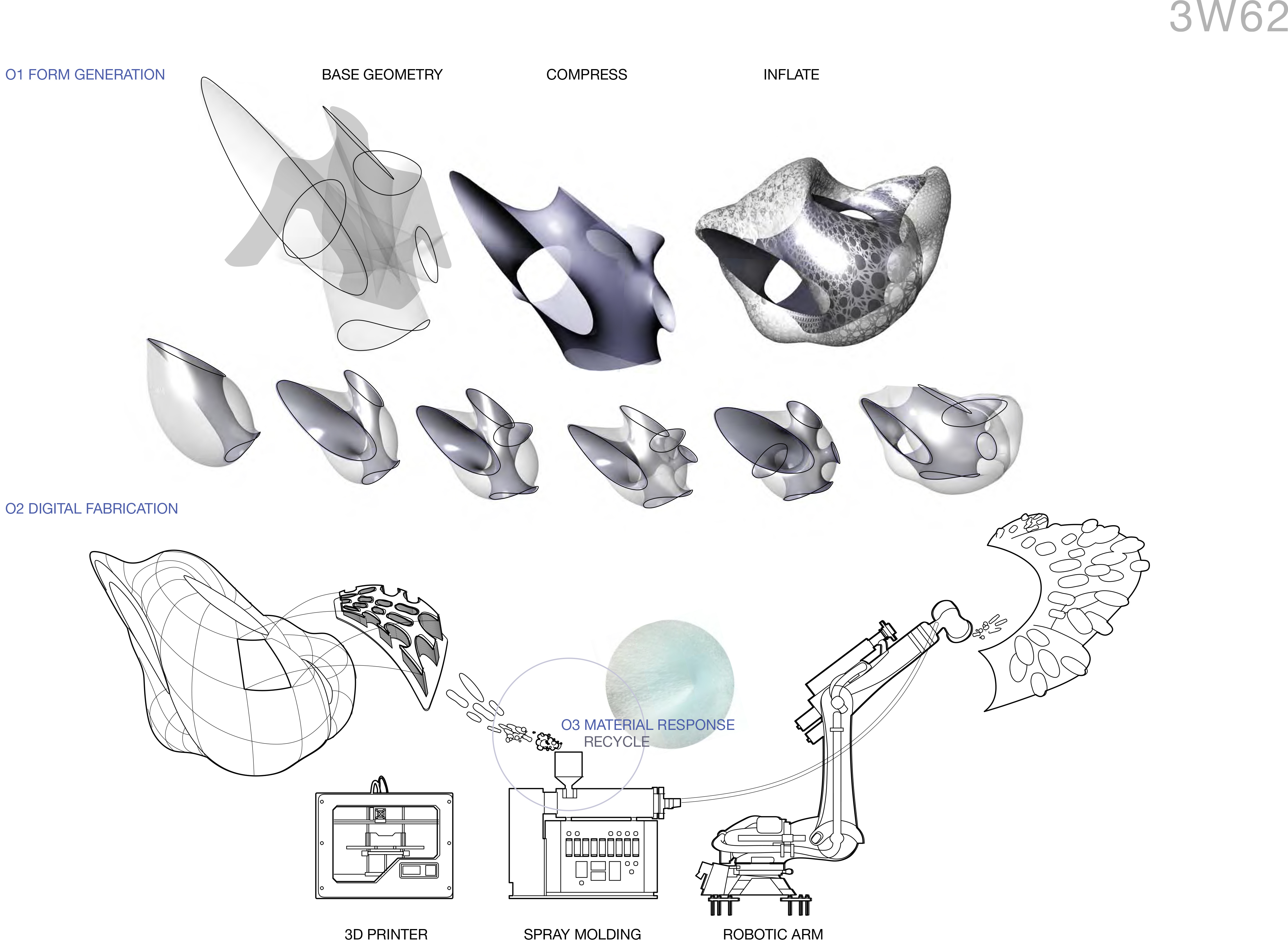Reshape'15 | Wearable Technology Competition
Project Description
Project Detail
RE-INFLATE
Re-Inflate explores the contradiction between skin-tight compressive clothing and loose non-formfitting fashions through computational design simulation, digital fabrication technology and responsive material properties in this age of pervasive computing.
The concept of compression and inflation accounts for a significant portion of the design space in which a designer determines what components of the article of clothing will reveal a wearers’ figure and what components will express the article’s design intent. With Re-inflate we envisage clothing which is composed of the dual-layering of a temperature sensitive form-fitting inner sheath and semi-translucent, breathable form-defining outer jacket. Through the application of 3d scanning hardware and computational modeling software a generic polygonal mesh geometry was generated to roughly represent the torso of a human figure from a captured set of scanned data points. From this base geometry a physics simulation engine was applied to generate and define a near minimal surface inner sheath and inflated outer jacket. Composed of elastic thermochromic fabric the inner sheath can help to monitor the wearers’ body surface temperature while simultaneously creating graduated color patterns that shift in response to a wearers’ rest and activity levels. The outer jacket utilizes the simulation inflated mesh geometry from which a porous pattern is derived and 3D printed. As current 3D printing solutions available impose serious limitations to the speed and cost of manufacturing, this printed part will not serve as the final shell but rather as the molding surface for a secondary spray forming process. In contrast to 3D printed methods of material layering, the part creation times associated with the spray forming process can be drastically reduce requiring only minutes versus days complete. In the spray forming process a specially designed spray head is used to deposit semi-liquid polypropylene fibers onto the 3D printed mold whose movement and rotation is carefully choreographed to maintain a perpendicular axis normal to the curvature of the printed geometry and adequate speed to preserve desired fiber density, translucency and breathability. While our prototype was produce without the assistance of robotic automation, this process would be ideally suited to fabrication by robotic arms which could precisely move, orient, and control the travel speed of the spraying process to ensure reproducibility. The final sprayed part inherits not only the form and shape of the original mold but characteristics of the sprayed material fabrication process such as its translucent textile/fiber like quality and the swollen blisters which become essential elements of the final design. After the programmed run is completed, this sprayed layer can be immediately peeled away and attached to the inner sheath through conventional tailoring to create the final product.
Although this digital form-finding process emphasizes the translation and transformation of captured data to design form, and the emergent characteristics of the spray forming fabrication processes, we believe design intuition maintains a critical role in the corroboration of design concept, functionality and aesthetic. In the end, at each stage of the design process from data capture, computational simulation to digital fabrication, design intuition remains an invaluable resource.




